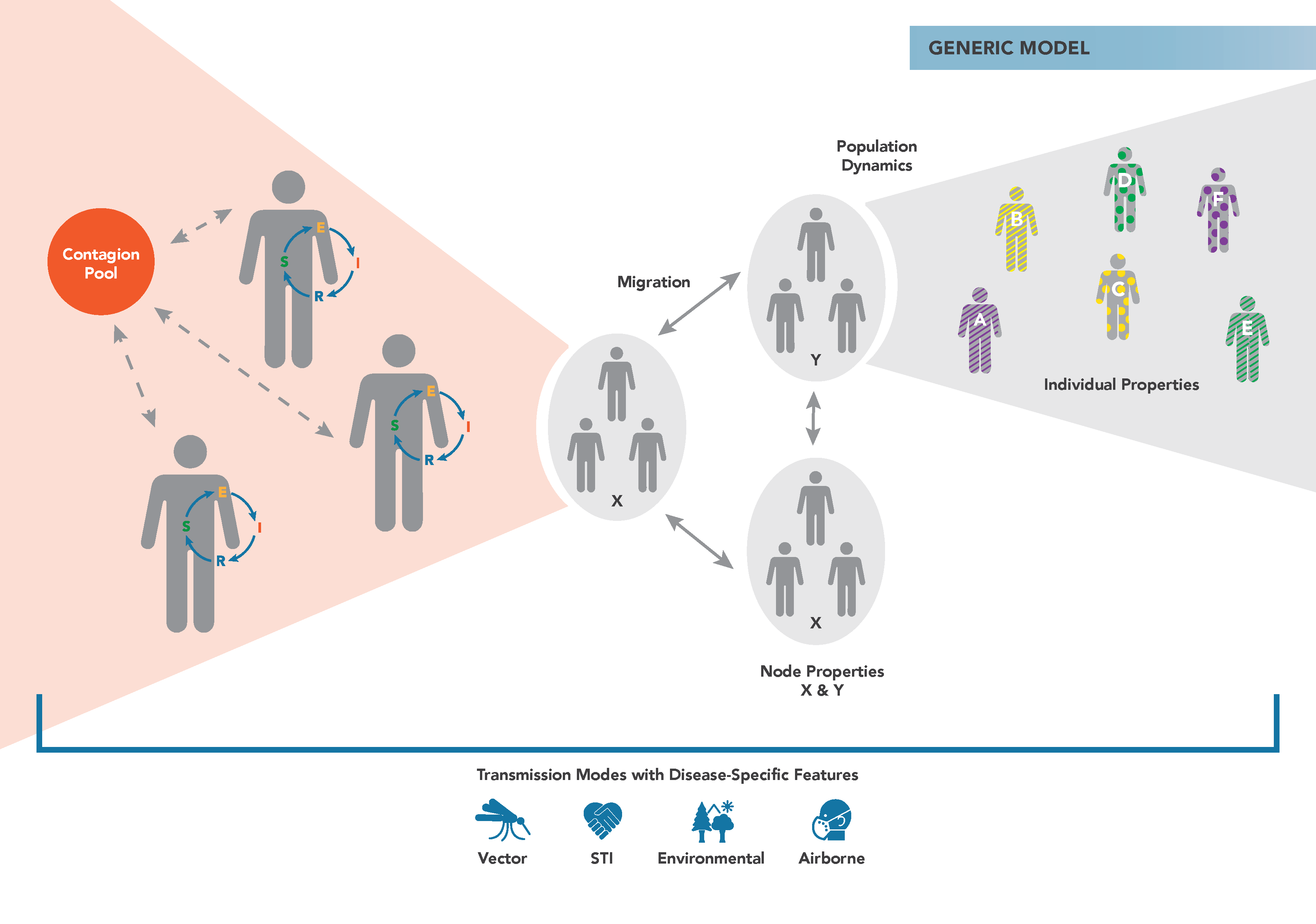Generic model overview¶
Disease models play an important role in understanding and managing the transmission dynamics of various pathogens. We can use them to describe the spatial and temporal patterns of disease prevalence, as well as to explore or better understand the factors that influence infection incidence. Modeling is a key step in understanding what treatments and interventions can be most effective, how cost-effective these approaches may be, and what specific factors need to be considered when trying to eradicate disease.
To understand the complex dynamics underlying disease transmission, epidemiologists often use a set of models called compartmental models. Developed in the early 20th century, these models stratify a population into groups, generally based on their risk or infection status. Underlying these models is a system of differential equations that track the number of people in each category over time. If you would like a more in-depth introduction to epidemiology and disease modeling, you may want to take the Epidemics course from The Pennsylvania State University through Coursera.
Epidemiological MODeling software (EMOD) is an agent-based model (ABM), another powerful tool used to help understand the complexity inherent in disease transmission systems. These models form a type of “microscale model,” where they simulate the simultaneous interactions of agents in an effort to recreate complex phenomena. Each agent (such as a human or vector) can be assigned a variety of properties (for example, age, gender, etc.), and their behavior and interactions with one another are determined using decision rules. EMOD supports different simulation types for various diseases and disease classes; the features present in the generic simulation type, which can be configured to model a variety of different diseases, are inherited by the more specific simulation types, such as malaria or HIV. For more information on the software architecture and inheritance, see Overview of EMOD software.
These models have strong predictive power and are able to leverage spatial and temporal dynamics. Further, complex environments can be developed in which the agents act, and agents may “learn” from interactions or “adapt” to their environment. As a result, ABMs are excellent for identifying emerging properties of the system: patterns that are not explicitly modeled, but instead occur as a consequence of the rules that govern the agents.
The figure below demonstrates the main components of the generic EMOD simulation type. Further information on aspects of these components can be found in the following sections.

Network diagram illustrating the generic model and its constituent components.¶
- Compartmental models and EMOD
- Disease outbreaks and animal reservoirs
- Adding heterogeneity
- Creating campaigns